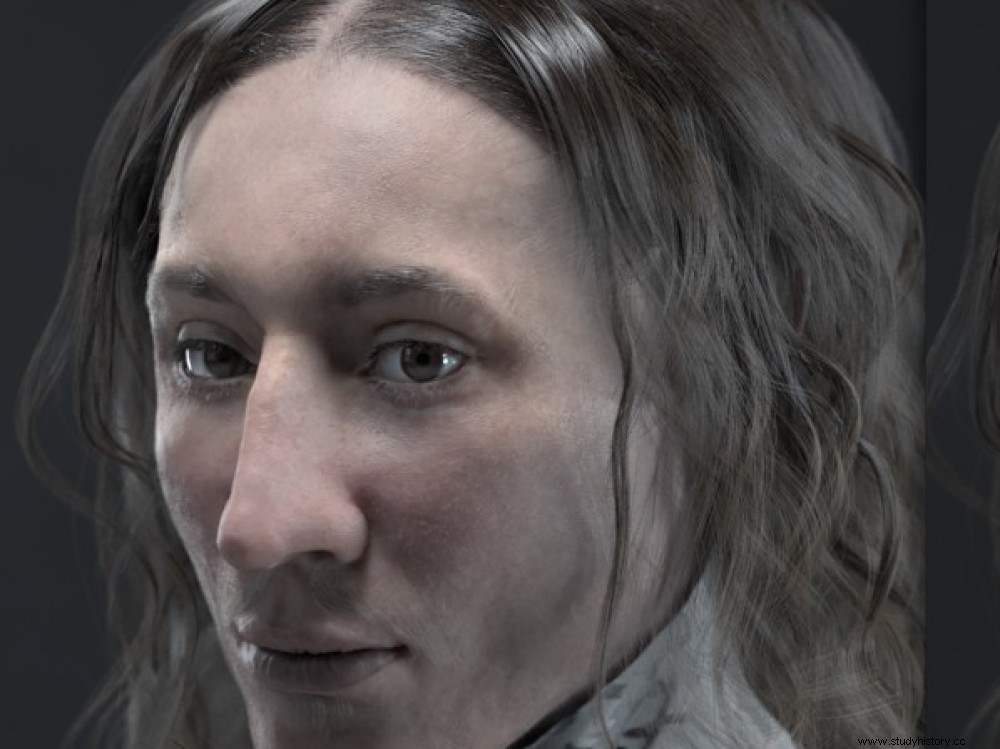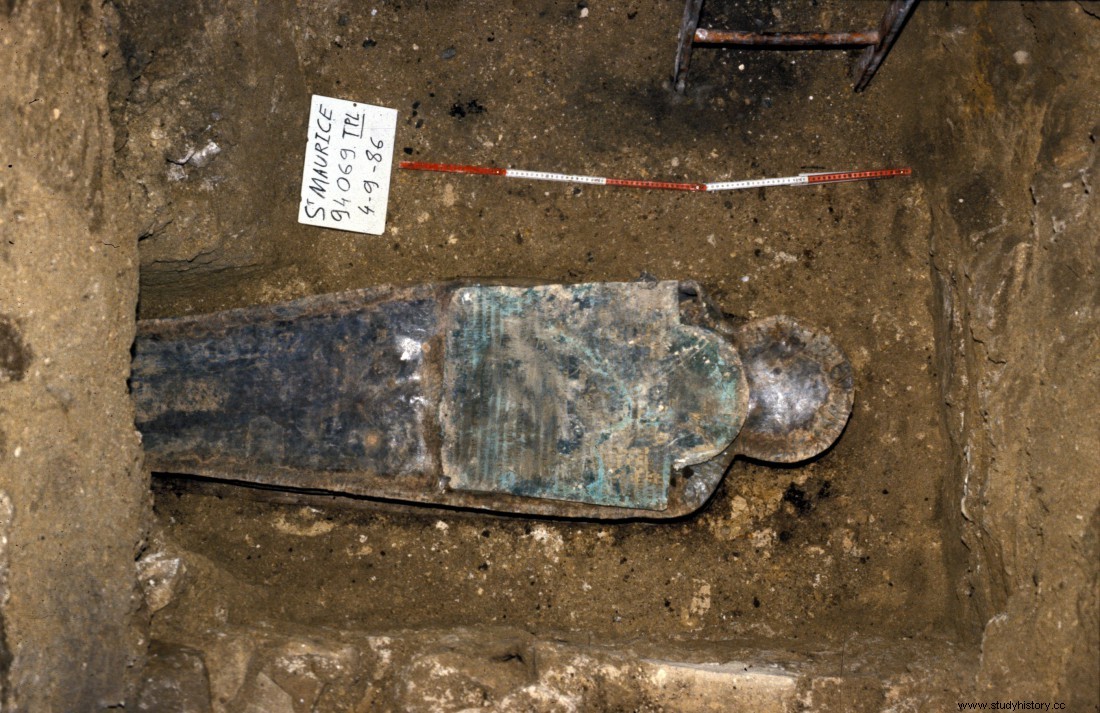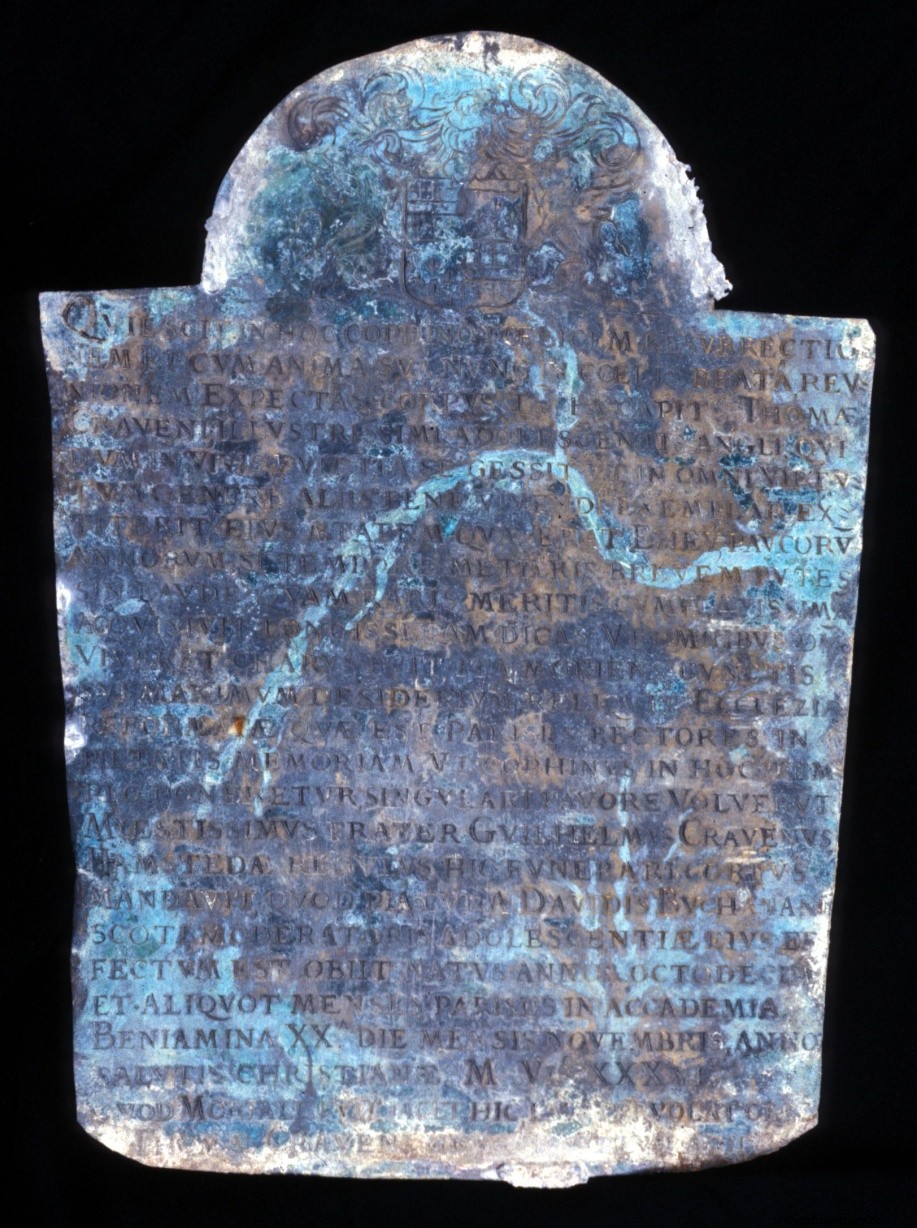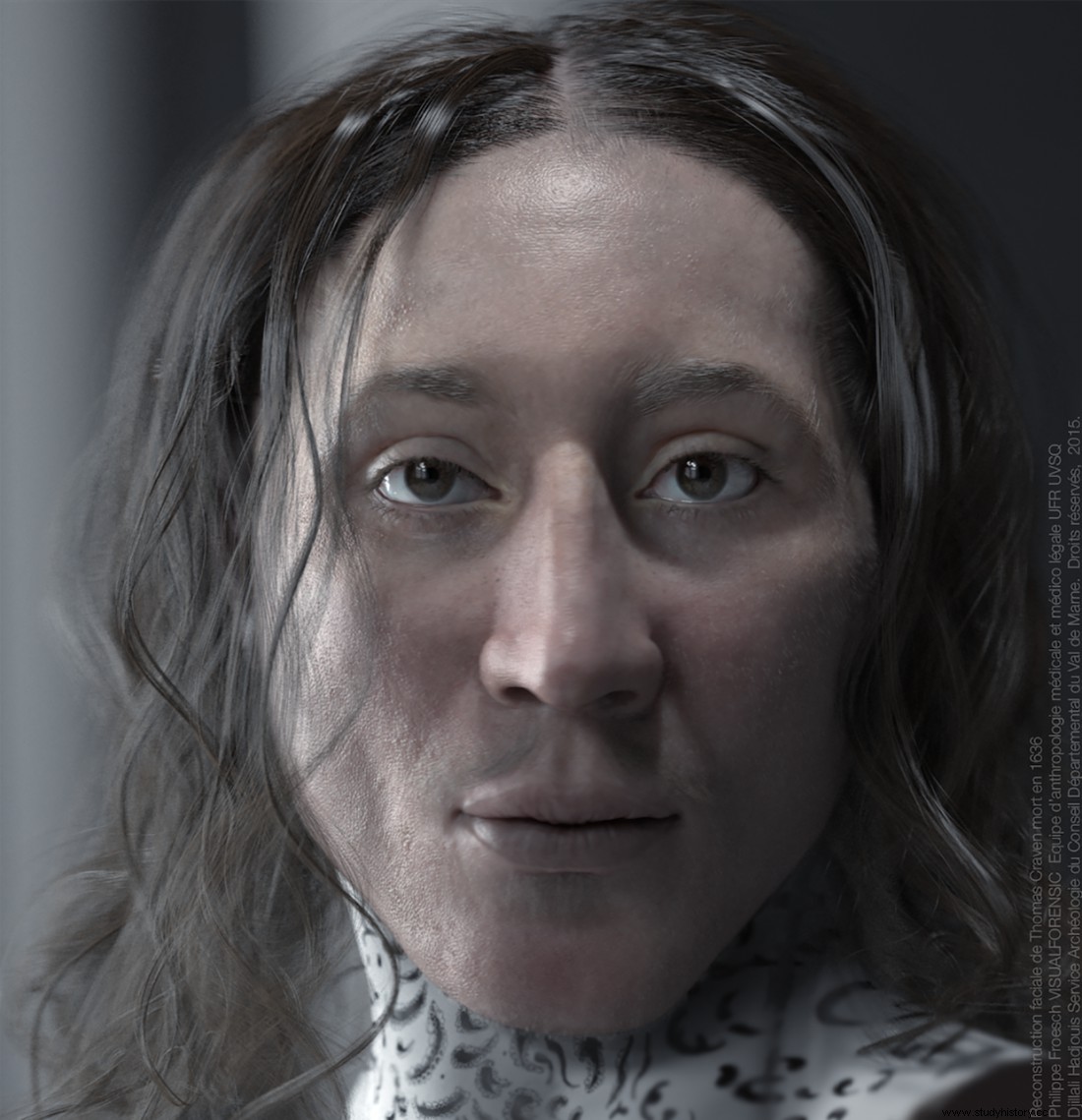In 2016, the company Visual Forensic produced this astonishing digital facial reconstruction of a young English Protestant who died in Paris of the plague in 1636. The monograph dedicated to him "Thomas Craven. Chronicle of a ghost" is now available in bookstores .

3D facial reconstruction of Thomas Craven. On the right, a phase with markers used to determine the thickness of the soft tissues.
UPDATE. The monograph devoted to the young Protestant who died in Paris of the Black Death in 1636 was released in the fall of 2020. "Thomas Craven. Chronique d'un revenant" (edition by Boccard) is a collective work written under the direction of the archaeologist Djillali Hadjouis. On the occasion of Thomas Craven's return to bookstores, we invite you to reread Bernadette Arnaud's article, originally published on February 17, 2016, devoted to the facial reconstruction of the Englishman whose sarcophagus was discovered in 1986. .
With his adolescent face where the shadow of a thin mustache emerges, this young Briton could seem straight out of a rock concert in London. However, Thomas Craven, a 17-year-old English nobleman, died in Paris in… 1636. His moving 3D facial reconstruction joins the series of astonishing portraits of Henry IV and Robespierre, to which we are accustomed to Philippe Froesch, the founder of the Visual Forensic company specializing in digital reconstructions of historical figures. It was at the request of Djillali Hadjouis, archaeologist at the Archeology Department of the Val de Marne Departmental Council, that Philippe Froesch has just restored his features to the young man who had been discovered 30 years ago in Saint-Maurice (Val de Marl). A cast of the skull and numerous scanners made it possible to produce this strikingly realistic work, like those used for the previous portraits.

The sarcophagus of Thomas Craven, when it was discovered in Saint-Maurice in 1986. © Ph. Huard
Persistent fragrances smelled as soon as the coffin is opened
It was in 1986 that the spectacular discovery took place:that of an anthropomorphic lead sarcophagus unearthed in the basement of a music conservatory, located on the grounds of a former Protestant cemetery. This had been destroyed in the 17th century, when the Edict of Nantes was revoked by Louis XIV (1685), which had put an end to tolerance towards Protestants. Catholicism is therefore the only religion recognized in the kingdom. Once the sarcophagus was opened, the archaeologists had discovered the remains of an embalmed individual, wrapped in a shroud held by a cord, on which was placed a bouquet of dried aromatic plants. Traces of an old wooden beer were still visible. The first examinations had revealed that the cranium had been sawn off, as had been done since the Middle Ages to extract the brain during autopsies.
As soon as the coffin was opened, persistent fragrances had also struck the researchers. These were the perfumes of the plants used for embalming and which were generally applied for the preservation of the corpses of the nobility. The analyzes of the plants used by the embalmers of the time thus attested to the presence of a cocktail of wormwood wormwood (Artemisia absinthium ), and marjoram (Origanum majorana ). "Their use was common among the aristocracy since the time of Ambroise Paré, the famous anatomist surgeon of the 16th century" , says Djillali Hadjouis.

Copper alloy epitaph found on the lead sarcophagus of Thomas Craven. © B. Allard, SD, 94
Who could possibly be buried in this leaden coffin? Archaeologists quickly solved the mystery. A copper alloy plate, glued to the sarcophagus, indeed bore the coat of arms of the Craven family. And a long epitaph in Latin was dedicated to the departed:"In this coffin lies, awaiting the joy of resurrection and a happy reunion with his soul which is now in heaven, the body of Thomas Craven, most noble young Englishman... death on the twentieth day of November 1636 of Our Lord... ". What was this English aristocrat, son of Lord Craven, Mayor of London, doing in this catafalque unearthed in the Paris region? And what could he possibly have died of in the prime of life?
Thomas Craven, a young Huguenot who came to study in Paris
For thirty years, a succession of anatomo-pathological, tomographic and paleopathological studies, associated with microbiological research carried out by researchers from the Faculty of Medicine of Marseille, have finally made Thomas' body "speak". And samples taken from the dental pulp and genetic analyzes led to the identification of the presence of the bacillus Yersinia pestis . "The cemetery in which he was buried was probably a cemetery for plague victims" , explains Djillali Hadjouis, also associated with UMR 5288 of the CNRS. Examination of teeth taken from five other individuals recovered from these graves in 2005 had indeed shown that all had been victims of the plague. "In some accounts of the history of Paris, we find mention of an episode of the plague that raged in Paris in September 1636, two months before the death of Thomas Craven, continues the paleopathologist. He was then asked to evacuate the Conciergerie to send all the prisoners to the village of Saint-Marcel, near the current Gare d'Austerlitz ."

Final step front view of Thomas Craven's 3D facial reconstruction. © Philippe Froesch Visual Forensic.
Thomas Craven was in fact a young Huguenot who came to study in Paris where he contracted the disease. His body now rests in a cold room at 4°C, in the archeology department of the Val de Marne Departmental Council. "We have requested that he be reburied ", specifies Djillali Hadjouis. In French legislation, any body studied archaeologically must indeed be reburied as soon as it has been identified. This most often concerns individuals born after the 16th century, since the state archives civil did not appear until the Renaissance." In the case of Thomas Craven, we no longer have these documents, because the Protestant temples which kept them were burnt down. The first temple of Charenton, a high place of Protestantism in France, was under Louis XIII, in 1621, and the second, rebuilt 2 years later on the same site, was definitively destroyed in 1686. All the Protestant parish archives are therefore gone up in smoke" , specifies Djillali Hadjouis. Luckily for him, his identity appearing on his funeral plaque, Thomas Craven could indeed be the subject of a new burial. A complete monograph on his case should be published soon. In the meantime, the young man has found a face... in the absence of a family, none of his descendants having, it seems, claimed him.
